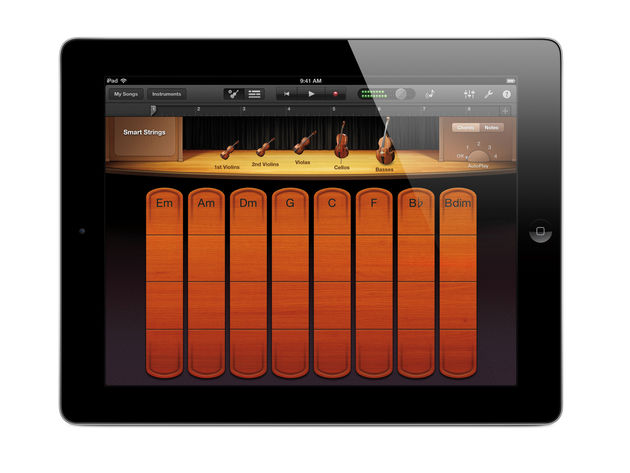Tons of helpful recording and editing features make GarageBand as powerful as it is easy to use. Edit your performances right down to the note and decibel. Fix rhythm issues with a click. Finesse your sound with audio effect plug‑ins. And finish your track like a pro, with effects such as compression and visual EQ. Note rhythms can be played via the software instruments, or created in the piano roll environment; rhythm correction is also included to lock notes to any time signature subdivision. GarageBand also offers global editing capabilities to MIDI information with Enhanced Timing, also known as Quantizing. GarageBand for iPhone and iPad. To edit a note in GarageBand 1.2, simply double tap on the note in a software instrument track (meaning a track that uses GarageBand’s internal sounds. How To Import Audio Files Into GarageBand for iPad Importing audio files in GarageBand: why do that? Let’s say you or your students have created an audio file in another app or software program – maybe on a laptop even – and now you want to import that audio file into GarageBand because you’d like to use the Smart Drums to add a backing. When you first open GarageBand you'll be asked to select the kind of instrument you want to use. At the top of the screen you'll see two options: Live Loops and Tracks. Live Loops is a relatively new addition to GarageBand, which allows you to sequence existing recordings in real time. Note that while you can import iPad’s GarageBand projects into the Mac’s version of GarageBand to work on them, you can’t do the reverse. Projects you create in iLife’s GarageBand can’t be ported to GarageBand for iPad. Similarly, you can’t import audio tracks to GarageBand.
GarageBand User Guide for iPad
You can edit notes in green Touch Instrument regions. The editor is like a close-up version of Tracks view, showing the notes in the region as rectangular bars. When you open the editor, you can change the pitch, length (duration), and velocity of individual notes. For some instruments, you can also change the articulation of notes, or the instrument that plays the note. Notes in blue regions cannot be edited.
You can also turn off Snap to Grid to edit notes free of the grid. To learn how to turn off Snap to Grid, see Edit regions in GarageBand for iPad.
Open the editor
Garageband Ipad Note Editor 7
Do one of the following:
Double-tap a region, then tap Edit.
Swipe up or down in a region with two fingers.
The editor opens. You can swipe left or right to move back or forward in the editor, swipe up or down to view higher or lower notes, and pinch to zoom in or out.
Select notes in the editor
Do any of the following:
Tap a single note to select it.
Touch and hold a note, then tap other notes to select them.
Touch and hold an empty part of the editor, then drag around multiple notes to select them.
Touch and hold a note bar on the left edge of the editor to select all notes of a certain pitch.
Ipad Garageband Midi Input
Add notes
Touch and hold the Add Notes button on the left side of the control bar, then tap in the editor. You can also drag the Add Notes button right to lock it.
Move notes in time
Select one or more notes, then drag the selected notes left or right.
Change the pitch of notes
Select one or more notes, then drag the selected notes up or down.
For Drums tracks, moving notes up or down changes the drum sound for the notes.
Change the length of notes
Select one or more notes, then drag the double-arrow handle of the last selected note.
Change the dynamics of notes
Select one or more notes, then tap the last selected note.
Tap Velocity.
Drag the slider left or right.
Change the articulation of notes
Select one or more notes, then tap the last selected note.
Tap More, then tap Articulation.
Articulation is available only for the Strings Touch Instrument.
Tap the articulation you want the notes to use.
Change the instrument that plays selected notes
Select one or more notes, then tap the last selected note.
Tap More, then tap Instrument.
Instrument is available only for the Strings Touch Instrument.
Tap the instrument you want to play the notes.
Copy notes
Select one or more notes, then tap the last selected note.
Tap Copy.
Move the playhead to the point where you want to paste the notes.
Tap an empty area of Tracks view, then tap Paste.
Delete notes
Select one or more notes, then tap the last selected note.
Tap Delete.
When the Add Notes button is held down, or is locked on, you can delete notes simply by tapping them.

Close the editor and return to Tracks view
Tap Done in the upper-right corner of the control bar.